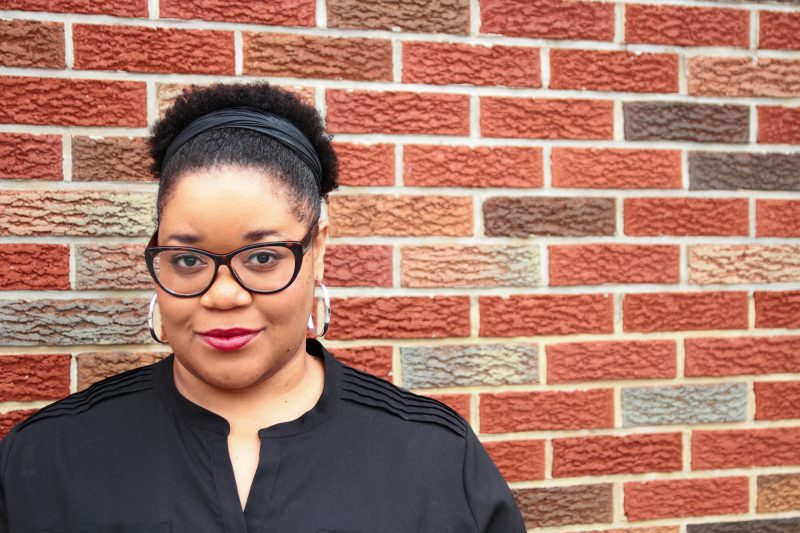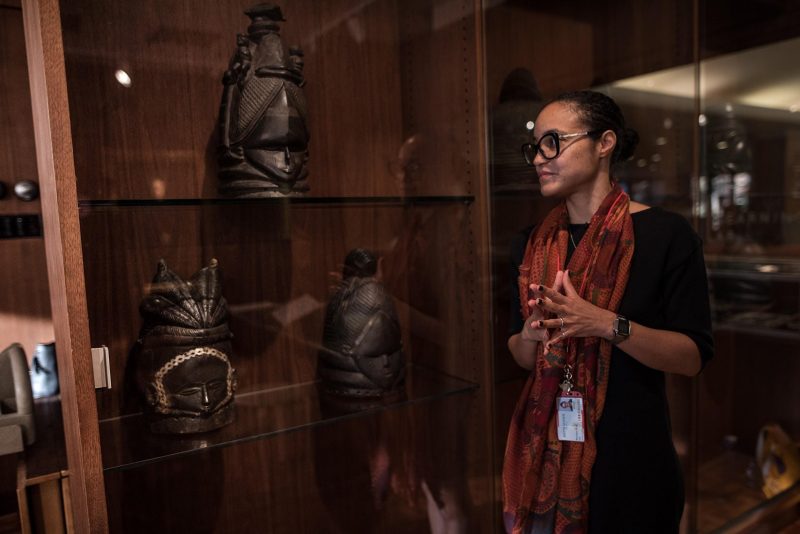
Western museum’s colonial legacies
From Hampton Museum’s creation as the world’s first Black museum in 1868 to the present decolonization movement in museums, Black curators have taken an activist stance towards challenging dominant white cultural narratives, standards of beauty, and segregation within museums. Alongside Black artists, Black curators have challenged eurocentric biases that invalidate Black art, including protesting institutional racism with the founding of the Black Arts Movement in 1965. The institutional legacy of Western art museums have been to erase Black heritage and deform Black beauty into ugly stereotypes and caricatures.
Early 19th century caricatures of people like Sarah Baartman, pejoratively referred to as the “Venus Hottentot“, and stereotypes that fueled Jim Crow minstrel shows misrepresented Black people with demeaning imagery, including insensitivity towards their African ancestry. Following the American Civil War, counter-representations to these negative depictions were archived at Historically Black Colleges and Universities (HBCUs). William H. Sheppard, the first Black curator at Hampton Museum, documented the atrocities of King Leopold and Belgium against the Kuba Kingdom while doing his missionary work in the Congo region of Central Africa. Besides his anti-imperial stance, Sheppard also collected and archived ethnographic objects from the Kuba people during the colonial period. Yet, despite his heroics, Sheppard’s deeds have been largely forgotten.
Contemporary Black curators such as Brittany Webb, Curator of the John Rhoden Collection, Pennsylvania Academy of the Fine Arts, and Monique Scott, Director of Museum Studies, Bryn Mawr College, continue Sheppard’s anti-colonial work with their curatorial interventions within Western art and anthropology museums. Their activist stances challenge the grand narrative constructed as the Western canon, particularly invisibility in permanent collections and anti-black racism. If museums are to achieve a practice of ethical curation, then representation and decolonization must be front and center a part of the contemporary conversation.
Why does Black curatorial representation matter in art museums?
The Andrew Mellon Foundation in 2015 revealed that only 4% of museum curators are Black. Today’s Black curators are not only advocating the merits of Black cultural production, they’re also demanding that museums diversify their staff. Museum institutions must become more responsive to their viewers multicultural needs, while their exhibitions should evolve so they are more accessible to a broader swath of visitors. However, this goal becomes a challenge when museum goers rarely encounter a non-white curator, and art institutions sustain large cultural gaps in their archives.

Webb, a curator at PAFA is stewarding over 300 objects for a 2022 retrospective of the sculptor, John Rhoden. Although Rhoden’s work is seen in front of the African American Museum in Philadelphia, he never gained much visibility here in the United States due to racial prejudice. While talking with Webb, I learned more about her curatorial responses regarding the history of cultural erasure and marginalization of Black artists. For example, the Harlem Renaissance artist Augusta Savage, exhibited Lift Every Voice and Sing in 1939, but, as Webb pointed out, “it was destroyed because no museums would collect it–and she could not afford to transport it home.”
“There is an urgency for me to see an exhibition like that to think it’s actually a huge responsibility to make the choice that some artwork is worth storing and preserving. Give it real estate in a building like this (PAFA). Do the research on it, so you can write a label. So you know how to talk about it. So that you’re not misrepresenting the history of a whole form as whiter and more narrow than it actually is,” said Webb.
Chronicling the cultural achievements of Black Americans will require not only more inclusive art canons, but also expansion of museums’ permanent collections. This is very important because 85% of U.S. museum collections are white, and still largely male. Although museums exhibitions are diversifying, they’re still not reflective of the diversity of American society. As that is the case, lingering issues regarding colonialism remain a thorny issue in anthropological museums.
Why doesn’t multiculturalism add up to decolonization in anthropology museums?

Besides the issue of representation in permanent art collections, decolonization of anthropology museums has also become part of the mainstream conversation. Hence, there are serious concerns about the current interpretation of ethnographic history in museums and its role in propagating racist ideologies. As a result, multiple conversations have arisen regarding museum decolonization, nevertheless, consensus on practice remains elusive. Monique Scott, a curatorial advisor to the Penn Museum’s new Africa Galleries, defines one act of decolonization as “tracing specific colonial histories of African objects in museums through archival research, looking at the language white outsiders used when describing the Black people they encountered and the Black artwork they assigned value to and circulated in a Western political economy. This discourse, this language, these words left a legacy for racial and racist ideology today.” Invoking Scott’s ideas will require a systematic reconstruction of biased narratives, re-evaluation of devalued cultural objects, including overhauling the museum administrative ecosystem.
Scott said, “the museum is one piece of a larger public sphere,” and that museums are “rooted in a very particular European history of a nation building project,” as stated in Anthropology News. Re-casting the Western museum as an inclusive public is not an easy task, especially since these institutions’ original conception was to serve as an othering agent towards non-white people.
Scott fears that “the decolonization movement risks becoming trendy and tokenized, especially as museums are working hard to become part of the decolonization industry.” She wonders if the hard DEIA–diversity, equity, inclusion, and accessibility–goal might offer a more specific set of practices to offer Black people: a space of recovery, inclusion, and leadership in the future of museums.
Why is a more inclusive art museum necessary?
Today, there is an urgency in museums to train a new generation of Black curators to undertake the cultural work of collection, archiving and re-interpretation of history. Nevertheless, museums remain resistant to change as seen in their museum archives, and underrepresentation of Black professionals in curatorial positions. As long as these illiberal practices remain in place, museums risk delegitimizing their institutions’ trustworthiness. Therefore, shifting the way these institutions operate requires not only equity in the exhibition spaces, but also reframing the historical discourses contextualizing the work.
Denise Murrell’s, Posing Modernity exhibition at the Wallach Art Gallery, Columbia University, 2019, provided a glimpse of what re-contextualizing museum narratives could look like in the future. Murrell’s work expands the conversation around European modernity to include the Black female model in Western painting. Until recently, this subject had been largely ignored in art history discourses or study. Highlighting the invisibility of Black subject matter in the canon further reveals how far museums have progressed since Sheppard. But, it also shows how much further we need to go in advancing representation and decolonization for posterity.









